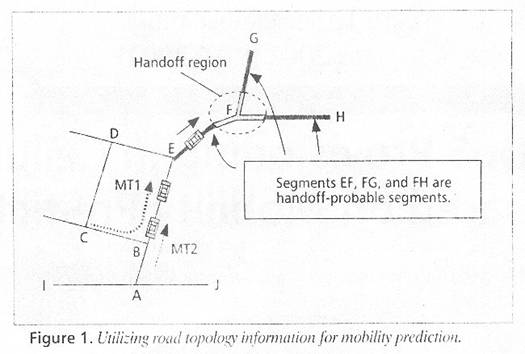





Published on Feb 14, 2025
In recent years, there has been a rapid increase in wireless network deployment and mobile device market penetration. With vigorous research that promises higher data rates, future wireless networks will likely become an integral part of the global communication infrastructure.
Ultimately, wireless users will demand the same reliable service as today's wire-line telecommunications and data networks. However, there are some unique problems in cellular networks that challenge their service reliability.
In addition to problems introduced by fading, user mobility places stringent requirements on network resources. Whenever an active mobile terminal (MT) moves from one cell to another, the call needs to be handed off to the new base station (US), and network resources must be reallocated. Resource demands could fluctuate abruptly due to the movement of high data rate users. Quality of service (QoS) degradation or even forced termination may occur when there are insufficient resources to accommodate these handoffs.
If the system has prior knowledge of the exact trajectory of every MT, it could take appropriate steps to reserve resources so that QoS may be guaranteed during the MT's connection lifetime. However, such an ideal scenario is very unlikely to occur in real life. Instead, much of the work on resource reservation has adopted a predictive approach.
One approach uses pattern matching techniques and a self-adaptive extended Kalman filter for next-cell prediction based on cell sequence observations, signal strength measurements, and cell geometry assumptions. Another approach proposes the concept of a shadow cluster: a set of BSs to which an MT is likely to attach in the near future. The scheme estimates the probability of each MT being in any cell within the shadow cluster for future time intervals, based on knowledge about individual MTs' dynamics and call holding patterns.
In our proposed technique, we require the serv¬ing BS to receive updated information about each active MT's position at regular time inter¬vals (e.g., 1 s). This will consume several bytes per second of wireless bandwidth for each MT, which might be negligible for future wireless ser¬vices. In order to incorporate road information into the mobility predictions, each BS needs to maintain a database of the roads within its coverage area, We shall treat the road between two neighboring junctions as a road segment, and identify each segment using a junction pair (J1, J2), where a junction can be interpreted as the intersection of roads (e.g.- T-junction or cross-Junction).
The approximate coordinates of each junction pair are to be stored in the database. Since a road segment may contain bends, it can be broken down further into piecewise-linear line segments. The coordinates defining these line segments, within each road segment are also recorded. All the above coordinates could easily be extracted from existing digital maps previously designed for GPS-based navigational devices. Infrequent updates to these maps are foreseen because new roads are not constructed very often, while existing road layouts are seldom modified.
The database also stores some important information about each road segment. Since two-way roads would probably have different characteristics for each direction. The database shall store information corresponding to oppo¬site directions separately. Information stored in the database includes the average time taken to transit the segment, the neighboring segments at each junction, and the corresponding probability that an MT traveling along the segment would select each of these neighboring segments as its next segment- These transition probabilities could be computed automatically from the previ¬ous paths of other MTs. The database will be updated periodically every Tdatabase since many of its elements are dependent on current traffic conditions.
In reality, the transition probabilities between road segments would probably vary with time and traffic conditions. For stochastic processes whose statistics vary slowly with time, it is often appropriate to treat the problem as a succession of stationary problems. We propose to model the transition between road segments as a sec¬ond-order Markov process, and we assume that it is stationary between database update instances to simplify the computations. Based on this model, the conditional distribution of an MT choosing a neighboring segment given all its past segments is assumed to be dependent only on the current segment and the immediate prior segment.

Using the road topology shown in Fig.1 as an illustration consider two MTs (MT1 and MT2) that the currently traveling from junction B toward junction E. MT1 came from segment CB. While MT2 came from segment AB. Based on the assumed model, the conditional probabil¬ity of MT1 going to segment EF will be comput¬ed differently from that of MT2.
If previous handoffs have occurred along a road segment, the probability of a handoff occurring in that segment is computed from previous data observed. The handoff probabili¬ty, the target handoff-cell. As well as the average time and position at which handoffs occur after entering the segment, are recorded. We shall refer to a segment that has experienced previ¬ous handoffs as a handoff-probable segment (HPS). An assumption made here is that MTs traveling along the same road segment in the same direction as previous MTs that have encountered handoffs are likely to encounter handoffs themselves.
Using the model described above, we could determine via chain rule the conditional proba¬bilities of reaching and handing off at each of the HPSs from segments that are several hops away. We could also estimate the average time required to reach them. Using current position and speed information, as well as previously col¬lected statistics corresponding to each segment along the paths. The target handoff cell corre¬sponding to each HPS is also available from the database. We could in turn estimate the proba¬bility that an MT would hand off to each neigh¬boring BS within any specified threshold time.
| Are you interested in this topic.Then mail to us immediately to get the full report.
email :- contactv2@gmail.com |